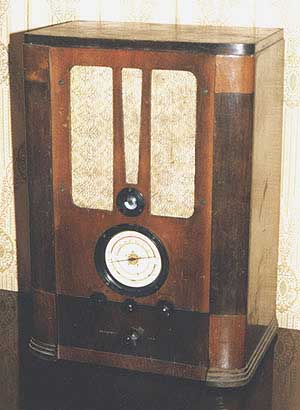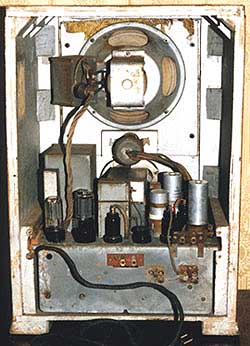The "SVD" line receivers ("Superheterodyne All-wave with a Loudspeaker") were the first really reliable multi-tube sets capable to compete with the makes of the leading Western countries. Their prototypes were the contemporary sets produced by the American companies "Zenith" and "RCA". Production of sets of this series was started in end-1937 at the Works No.3 of the People's Commissariate of Communications in the town of Alexandrov. During one year 3 modifications of the set were produced. The first of them - the "SVD-1" was put out in small lots and was assembled on RCA glass valves, which were not produced in the USSR. At the same time working out of better and more stable metallic tubes was under way and some months later the Alexandrov Works produced a set model "SVD-M" on home-made metallic tubes. In this set the "magic eye" tuning indicator was installed for the first time in Soviet receivers. The "SVD-9" model has some schematic changes as compared with the basic model. In the author's collection the "SVD-9" set is of the first modification produced in 1938, has an outer design similar to that of the "SVD-M" (a round scale). Its chassis has the serial number 12816. In the next lots of the "SVD-9" receiver its design was slightly changed (the scale was stretched horizontally). In some lots of the set metallic tubes imported from the USA were installed (made by RCA, Ken-Rad etc.)
 |
|
The set is assembled in a massive tower-shaped case covered with varnished veneer of two shades.All the regulating handels are on the front side. The round scale of the aeroplane type is protected with glass and in the center it bears an emblem in the form of the globe in the background of the Soviet symbols: the Star, the Sickle and the Hammer.
 |
|

